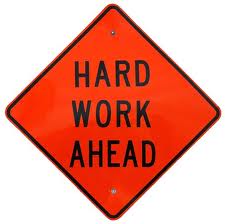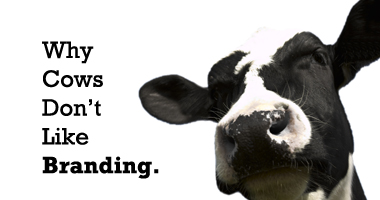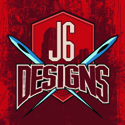Inspiration
I’m going to begin with a very broad and sweeping claim here that is quite uncharacteristic of me: every clothing line begins with some form of inspiration which expresses itself as a concept that can be interpreted graphically. What this means is that you are not going to be able to start a clothing line simply by wanting to start a clothing line – you need a source of inspiration that is going to guide you towards making coherent artistic and financial decisions.
Being able to clearly articulate a specific inspiration will give substance to your motivation for starting a clothing line in the first place. It’s been my experience that a lot of people overlook the importance of clearly answering a very basic question for themselves: “why am I doing this?” The people that have the resolve and commitment to overcome the disappointments and learn from their mistakes are the ones who have provided a compelling and unambiguous answer to this question. Remember, money is a motivation to do a lot of different things; you will want to ask yourself specifically why you want to start a clothing line instead of rather some other enterprise.
For most people that come to me, the source of their motivation lies in their confidence that they have an idea that can be expressed artistically through a clothing line which others will want to identify with. People buy designer clothes because they feel it expresses them in some way. What is your clothing line going to say? What is its theme? Is it going to spotlight culture, urban art, a sporting activity, or music? These are just some brief examples of inspirational themes. The source of your inspiration may be entirely different and this will determine what path you choose when it comes to making decisions later on.
Work, Money, Time
A later section will deal with issues that are specifically artistic, but for now I’d just like to comment on the importance of making an initial dedication of work, money, and time. This is the most straight forward advice I can give. I can’t give you a formula for developing the right source of artistic inspiration, but I can tell you that the success of your endeavor is going to hinge largely on your ability to consistently commit a trifecta of work, money, and time.
In a way this is one of the easiest things about starting a clothing line because it is so formulaic and obvious. But I’ve seen good artistic inspirations fail as clothing lines because they weren’t willing or able to make these fundamental commitments. And it is sad to watch an enterprise fail because there was a lack of effort to do the easy things.
So how much work is it to start a clothing line and make it successful? Starting out is the hardest part and will require your full attention to sway the odds of success in your favor. Keep in mind that the statistical odds of success are around 50% for new clothing lines, work is one of the easy things you can do to create a statistical advantage. Some people come to me who have high confidence in their design concept and think it will magically just ‘take-off’ once they start marketing it. This may be true in very few cases and under very rare conditions, but the rest of us live in a world where you will have to work hard for every single sale you make in the beginning. Only after a year or two of intensive effort will you be able to rely more on referrals and return customers. The beginning is the most difficult part, but just keep in mind that you are trying to sell to both them and everyone they have any contact with. There will be more about marketing strategies later.
Another frequent question I get from people trying to start a clothing line is about how much money they will need to invest initially. Being a custom apparel printer, I can tell you right away how much you will have to pay to get shirts and merchandise printed. This will vary depending on the number of colors in your design, the number of locations, and other things like the quality of clothing you are going to print on. To get a free estimate on the costs of your initial product purchase, just shoot me an email (info@j6designs.com) with the details, and include the artwork so I can provide you an accurate quote.
The product is an initial costs that can be calculated fairly easily, however there are a lot of other costs to consider which will vary depending on your business model choice. For instance, you need to decide whether you are going to open in an old brick-and-mortar establishment with monthly rent and utilities to add on to the overhead, or if you will opt for just a website instead. The overwhelming majority of people that come to me have always opted to start with a website because it is less of a commitment than signing a year-long lease with a landlord. We will go over the pros and cons of these options in a later section, but for a good discussion on start-up costs to get you familiar with what you will face check out this article: http://www.howtostartaclothingcompany.com/costs-of-starting-a-clothing-brand-revisited/
A Website
When it comes to money, even though a lot of costs vary depending on your business model, there are usually always two things you will need to pay for to start out: a website and the product. The more professional the website, the more it is going to cost. But if you lack monetary resources, you can start out with something basic and make upgrades as money starts coming in. One common mistake I see people make is to start out with a less than impressive website, make some sales despite of this, and then fail to take that money and reinvest it in improving the website. This is important because the website is the face of your business and it needs to look as professional as you can afford to make it. People see an unprofessional or poorly functioning website and they question the integrity and quality of the product you are selling. Having a bad website is guaranteed to turn away potential customers – this is one of the first lessons people learn in this business.
Another piece of advice about starting a website for your new apparel line is fairly trivial but will save you a lot of trouble down the road. Always register your DNS with a different company than the one you use to host your website. The reason for this is that I have never found a web hosting company that did not end up declining in quality of service over time. It’s fairly difficult to pin down why this happens, but as a general rule, hosting companies start out good and then go through growing pains which they are never able to recover from once they become successful. Having your website go down for even just a couple hours can cost you a lot of money once you start getting traffic. To prevent this, you will want to switch hosting companies frequently, and in order to do that you will not want to have your DNS registered with the same company because it makes it nearly impossible to switch if both are with the same company.
Since having technical issues with your website can cost you a lot of money fairly easily, it is advisable to spend some time researching the hosting company to find one with good reviews and the features that matter to you. Each of them has their strengths and weaknesses; you will need to read through reviews to find one that has the strengths you are looking for. Remember, the hottest hosting company at the time will probably be a new one, but over time their service will decline and you will be prepared to move on to the next one because you didn’t register your DNS with the same company.
But what if you have a great idea that’s going to revolutionize the apparel industry and don’t have enough money to even start a bare-bones website? Sure, you can purchase one of those website templates from a hosting company and skimp along to begin with, but some-time in the near future you are still going to need an investment of thousands of dollars to get a website that is professional and offers functional features like a user login and shopping cart. One of the themes I am going to continually emphasize in this discussion is the importance of building partnerships to do the things you either can’t afford to do or aren’t good at. In the case of a website, it has been my experience that it is best to plan long term; so instead of going the cheap route, I would highly suggest finding a partner who is also inspired by what you are trying to do and has the programming expertise to build a presentable website. Having partners may cost you a share of profit down the road, but for those of us in the real world operating on a budget, it is what makes it possible to get off the ground in the first place. If you care about what you are doing and want to make a living doing it, the benefits to partnership by far outweigh the costs for those with limited monetary resources to cover start-up expenses.
One common misconception I am consistently having to disabuse people of is the myth that a website is nothing more than an initial start-up cost, and unlike renting a brick-and-mortar establishment there are no ongoing overhead expenses associated with it. While it is indeed true that the ongoing expenses of renting square footage are much higher than those of maintaining a website, it is a fantasy to think that the website, once the initial costs for building it have been met, will magically operate in perpetuity without continued support and investment. Having learned this lesson from my own experience owning numerous websites, and having observed the same issues consistently complicate the efforts of apparel line start-ups, I can confidently advise you to calculate continued website maintenance and updating costs into your annual overhead expenses.
It’s not simply that the website is going to need routine maintenance and updating. If you are serious about your endeavor, you will never underestimate the value of being prepared for the unexpected and having money set aside to make substantial revisions to the functionality and aesthetic appeal of your online presence. The fact is, unless you have some god-like ability to predict the future, what you think you need in a website at the point when you start your apparel line, is not going to be the same as what you will actually need once your sales volume starts to increase. To maintain a competitive edge, you will need to always be looking for ways to make minor and major adjustments that keep your business processes from becoming stale and inefficient. To put it simply with the help of a cliché: if you’re not moving forward, you’re moving backwards. This is true for many aspects of starting an apparel line, but establishing a dynamic and innovative online presence is probably the most commonly overlooked and neglected aspect – since most people prefer to spend all their time and resources perfecting the product.
By taking advantage of the many functionalities available on a website, you can streamline your entire business process to minimize stress, administrative errors, and costs on labor. Whether or not these things are important to you will depend largely on your aspirations. Do you want to eventually be able to make a living on the profits? Or are you simply doing this as more of a hobby with your spare time? If you are planning to make a living doing this, you are going to want to put a lot of thought into your business process, and this is why the functionality of the website is just as important as the product you are selling. Of course there is a lot of debate over what is more important – is it the artistic vision expressed in the product? Or is it the mechanistic workings of a well-planned business process that lead to success? There is really no way to answer this question because it takes both and neither can be said to be more important than the other with any certainty in all cases. Here you will need to use your judgment to determine which is of greater importance for you in achieving your aspirations.
For some more food for thought on this subject check out the posting at this link: http://www.howtostartaclothingcompany.com/cashflow_quadrant/. This article highlights the fact that having a great product will matter very little if you don’t put consideration into exactly how you are going to sell it. There will be more discussion about the business process as far as marketing and production are concerned, but for now I just want to emphasize the crucial role your website is going to play in determining your capacity to develop a successful business in the apparel industry. Remember to actively engage with your website by making substantial advances to its functionality and aesthetic appeal instead of just making a one-time investment and thinking it will coast along without any further improvement.
Branding
But wait! We are getting way ahead of ourselves with all this talk about websites and business processes. Before all of that, you need to put a lot of thought into how you are going to brand your new clothing line.
The first thing you need to decide is your name and logo. This may surprise you, but I get a lot of people walking into my office to place an order for some product who have not yet decided on either of these. In a way this is quite understandable and I can fully relate to their hesitation: the brand name is a big decision, it is a decision you will only be able to make once, and it is supposed to represent the ‘essence’ of your artistic vision for eternity.
There are those who don’t put much thought into the name and logo, but this is usually because they don’t fully comprehend the significance and permanence of their decision. For instance they may think it is something they can just make adjustments or refinements to later on down the road when they have proven to themselves that they can sell their product. It may seem obvious to most people, but you absolutely cannot simply change your logo. If your artistic vision suddenly develops in a different direction than when you first started, you are much better off simply starting a whole new company instead of trying to change the name and identity of the existing one. For a first-hand account of someone that didn’t put much initial thought into the branding and then tried to change the logo later, check out this article: http://www.howtostartaclothingcompany.com/how-not-to-start-a-t-shirt-company/.
Every one has their own way of thinking about how to make branding decisions, but here are some things to consider that I have found very helpful in working with people trying to kick off their clothing line.
Before you even start to think about what the name and logo are going to be there are several things you need to have nailed down beforehand. Until you have made the following things explicit you are groping in the dark and aren’t likely to come up with anything that is very inspirational or compelling. First of all, you need to develop a narrative or theme for your brand. This will help to make the various products you are selling have a certain coherence and unity that people want to identify with. Another way of putting it is that you need to have an artistic vision that is unambiguous and preferably appealing to a specific audience. Think about your prospective customers: what will they want to identify with? What statements do they like to express? What attitude do they take towards life?
Those may seem like corny and inconsequential questions to consider, and I’m not here to argue that they aren’t, but what I can say is that answering those questions is going to help you determine an approach to branding your product that is relevant, expressive, and authentic.
You certainly don’t have to do this, and a lot of people don’t need to because they have a strong understanding of their market, but I always suggest taking the time to sit down and articulate explicit answers to these questions about the customers you are targeting. Often the things we think are obvious and intuitive are actually just convenient assumptions we make which hide deeper meanings; and you will never get to that deeper meaning by not being explicit about what it is your prospective customers identify themselves with and why. This approach is not going to help you come up with creative concepts for artwork (although it’s possible), but it will help you if you are having trouble orienting yourself and anchoring your apparel line with a branding concept that can be used to derive the name and logo.
The discussion above assumes that you have already determined who it is you are going to sell your shirts to. This is another aspect you shouldn’t take lightly when trying to come up with a vision for your artwork and the branding concept. It bothers me when people come to me with a clothing line concept and don’t yet know exactly who is going to buy the product or why. Some people seem to think that they are just going to do something creative and then random people from all walks of life are going to buy it because it looks ‘cool’. This type of approach is almost certain to lead to failure because your branding concept and artistic vision is incoherent and lacking in any sort of unified identity that people will want to be associated with. A few pithy words of wisdom go something like this: don’t try to appeal to everyone because no one wants to look like everyone. People want clothes that make them look a certain way and make a certain statement about who they are as an individual. Furthermore, people want to identify with a brand that makes a specific statement, not one that ambiguously tries to appeal to the average person’s aesthetic sensibilities.
In short, be specific about who you are going to sell your product to; make their life explicit to your understanding. Once you have done these two things, you will be in a good position to make the important branding decisions that will largely determine the path your new clothing line takes. Coming up with a branding concept is one of the more fun aspects of starting a clothing line, and I am continually surprised by the number of people who have not really thought these things through. Perhaps it’s because they think things will just fall into place later on, or perhaps they are waiting for inspiration. Whatever the reasons, they don’t seem compelling to me, and I know from experience that a strong branding concept is a good indication that you know your market, you know your specific niche in that market, and you are ready to confidently exploit it. If you find yourself unable to make branding decisions — either because you are unsure of who is going to buy your product, or are unable to articulate an artistic theme — I would seriously suggest going back to the drawing board to get those things figured out before venturing further.
Once you have done the work of thinking through a substantive branding concept, you will find that other things fall into place more easily then when you were just winging it and making things up as you went along. For instance, you will have a defined artistic vision and you will have intimate knowledge of how your target demographic is going to relate to it.
Having this kind of long-term vision takes a lot of stress out of the routine decisions you will have to make everyday. You don’t’ have to wake up every morning and ask yourself for inspiration because inspiration has been built into the dna of your apparel line, and you therefore already have the stabilizing orientation of a well thought out branding concept to work off of. Your decisions will have more purpose and direction. Having this purpose and direction means that the choices you make a year from now will be able to complement and not contradict, or be counterproductive towards, the choices you make today.
Think of your apparel line as a construction project. Your branding decisions are the foundation on which the integrity and stability of the building is going to depend. The foundation gets poured once and the rest of the construction project is built on top of it. You can’t go back and redo the foundation years from now without having to tear down the rest of the building. This is just a helpful analogy to consider as an illustration of how the decisions you make years from now are going to be fundamentally tied to the foundational branding decisions you make from the start.
Now that you have a narrative, an artistic theme, a well-defined market, and an explicit understanding about why people are going to buy your product – you are ready to establish a brand! This is going to require some careful thought; but at the same time have fun with it, don’t let the long-term implications overwhelm your sense of creativity and stifle your ability to take a risk. Above all, don’t take this as a one-size-fits-all method for success. These are just some thoughts that will hopefully get you thinking so you can make the independent judgments that are appropriate for you, in your particular situation, and at this particular time.
One last thought and then we’ll move on. When you do nail down a brand name, make sure to immediately check with an internet hosting company to see if the same domain name is available. If it is already taken, which is often the case, than you will need to think up some witty variation on your brand name to use instead. Preferable the variation will still include the brand name in it.
Here’s a brief recapitulation of the key points that have been made in this chapter. The focus has been to provide some insight and guidance for those who want to know where to start. The discussion began by pointing to this enigmatic thing called inspiration as a jumping-off point. Whatever your inspiration is, remember that its importance is not necessarily in its content. Its real value lies in its strength to give you confidence in what you are doing. You’re not going to get other people to believe in what you are doing unless you believe in it yourself. Next we discussed how the easiest part to building a successful clothing line is putting in the necessary effort by committing work, time, and money. We concluded with remarks about the importance of putting a lot of thought into developing a solid branding concept. It’s your foundation and it will help you make decisions that are purposive and directed toward a coherent vision for the company.












Magnificent goods from you, man. Thursday Another Day & Great Progress! I’ve understand your stuff prioevus to and you’re just extremely wonderful. I really like what you’ve acquired here, really like what you are saying and the way in which you say it. You make it entertaining and you still take care of to keep it sensible. I can not wait to read much more from you. This is really a tremendous Thursday Another Day & Great Progress! informations.